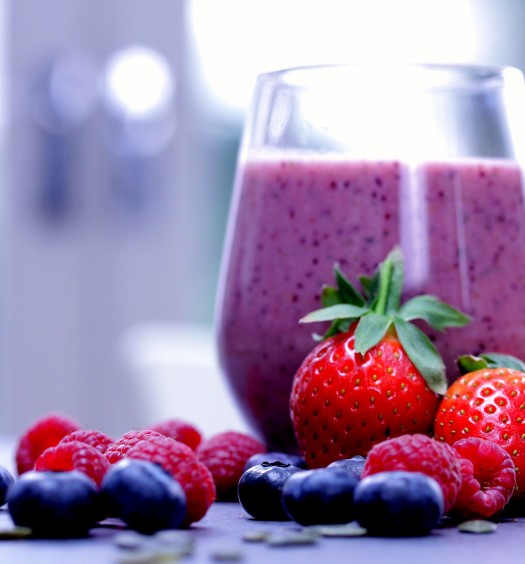Last week I was nearly taken out by a rogue Brazil nut discreetly hidden in a matcha protein bar! You won’t believe where I was – at the Allergy Show! You couldn’t make it up. There I was, surrounded by stands of freefrom everything with industry leaders in allergy research! It’s the irony of ironies…The Allergy show!!! Seriously!!!
I attended the show excited to sample new products, network and hear keynote speakers. Far from my mind and totally unexpected was to spend the afternoon on a bed in the medics room on the verge of anaphylactic shock.
It wasn’t pleasant at the time, in fact it was downright scary but almost more mortifying was when the medics asked my profession and the whole room fell about in fits of laughter as I said ‘Nutritionist’. Despite my fear I did see the funny side, a Nutritionist nearly dying at the show because she sampled a bar containing nuts she is well aware she is allergic to – and wasn’t carrying an epi-pen.
I’ve been allergic to Brazil nuts all my life. I can remember at school the kids teasing me; allergy wasn’t as common back then and it was somewhat of an intrigue with my classmates struggling to understand that something as ridiculous as a Brazil nut could kill me. They begged me to lick a nut to get out of double physics, not understanding the gravity of the situation.
Even my Grandmother thought I was being dramatic, presenting me with an annual gift of a box of Just Brazils each Christmas to prove her point! I had a few encounters in childhood – my whole body would swell and the itchiness was unbearable, often lasting a number of hours but in my early 20’s I had a full blown anaphylactic shock and nearly died after eating a roasted veg and pesto sandwich. Since then I have to be vigilant when eating out and should always carry an epi-pen.
I let my guard down at the Allergy show, assuming everything would be safe. I just popped the offending bar in my mouth. In a matter of seconds I felt that familiar itch in my throat and immediately alerted the organisers who rushed me to their medical room.
I should have checked first and do blame myself. It wasn’t just the Allergy show, it was attached to the Vegan show too and I hadn’t checked if the whole exhibition was nut free. I also hadn’t checked the bar before eating it. Allergies are such a big issue these days and the Allergy show is a great forum for concerned parents and allergy sufferers to learn more about their condition, how to control it and find new ‘safe’ products. But my experience just goes to show you can never make assumptions about food when you have a severe allergy, no matter where you are.
How to cope with an allergy
Allergy levels are soaring around the world. Peanut and tree nut allergies are the most worrisome, frequent and one of the most common triggers for anaphylaxis.
Allergies are disorders of the immune system. Basically the immune system overreacts to a ‘harmless’ substance and goes into overdrive, producing antibodies to ‘attack’ the allergen. Typical symptoms include wheezing, itching, nose running, itchy eyes, rashes and shortness of breath. Severe reactions can result in anaphylaxis which is life threatening.
As an allergy sufferer, it’s vital that I avoid Brazil nuts. Sounds easy enough; you can look at ingredients, or ask, and be told if the product contains any dangers. But really complicating the matter are the ‘may contain traces of nuts’ labels that cover practically everything from soya milk to pitta bread. What does that actually mean? Does it or doesn’t it have nuts?
This issue drives me crazy and highlights the fact that food manufacturers still can’t tell us what’s in our food and flippantly use the label as a kind of insurance policy, a legal disclaimer if you like.
The problem arises through the risk of cross-contamination during production. So the answer should be to only eat products made in a nut free environment and clearly labeled as such but it’s not as simple as that. Traceability is now everything (think the horsemeat scandal). It’s not just about the factory that made your product but how the suppliers handled their products, what fields they were grown in etc. Basically has the raw ingredients or final product ever been near a nut and could possibly have been contaminated?
What does this mean for the allergy sufferer? Well it’s complicated. The Food Standards Agency states that ‘warning labels should only be used where there is a demonstrable and significant risk of allergen cross-contamination and they should not be used as a substitute for Good Manufatcuring Practices’. This makes sense; if there is a genuine risk, label it so we can clearly tell what is safe to eat. But, you have some manufacturers genuinely concerned about a really obscure risk and others whose products may actually be unsafe to eat yet everyone uses the ‘may contain nuts’ label. There is no way of knowing if the risk is genuine.
Last year Tesco was in the spotlight for blanket labeling many of it’s products, adding warnings to random items such as juice, squash, ham, yoghurt and sweet potatoes! Campaigners went mad and Tesco eventually backed down agreeing to remove the labels after they ‘reviewed’ their processes and were ‘satisfied’ the products were safe. Just how many products are being unnecessarily labeled? Honestly it feels discriminatory towards allergy sufferers and infuriates me.
You could argue that we shouldn’t be eating processed foods anyway, but the odd bar of dark chocolate, sweet potato or tube of tomato puree is hardly a nutrition crime (how nuts could infiltrate tomato puree still baffles me!). For me, I weigh up the odds. I only have to be careful of Brazil nuts and am pretty sure that tube of tomato puree will be fine. But for many parents of children with multiple allergies they are faced with restricting their children’s diets or taking a risk every day. It’s a really frightening risk and companies should be accountable for their labeling and be able to prove where they find the risk.
Is there light at the end of the tunnel?
Interesting research has been underway for a number of years to give peanut allergy sufferers small amounts of peanut flour over a period of months. This small exposure has modulated the immune system in a significant amount of cases and provided promising results. These results are even more outstanding when the flour is given alongside probiotics. One study from Australia found 80 percent of peanut allergy sufferers were subsequently able to tolerate nuts after treatment. Clearly this is life changing for the subjects involved but cannot be ‘done at home’ as the risks of anaphylactic shock are too great.
But there are things we can do at home to calm our immune responses and ensure we have a healthy gut. It’s the combination of inflammation, an immune system that is off kilter and a presenting allergen that causes allergic reactions. The problem begins in the gut; this is where 80% of our immune system is based.
The most promising research is through modulating the bacteria already present in our guts. Friendly bacteria help train our immune systems to distinguish between pathogens and harmless allergens, helping us to respond appropriately.
Bacteria thrive on a diet of plant fibres so a simple way to influence our immune responses is to eat more fermented foods (sauerkraut, miso, tamari, yoghurt, kefir), supplement a good probiotic and eat a diet rich in raw or lightly steamed fruit and vegetables to provide enough fibre for the bacteria to flourish (they particularly like onions, garlic, Jerusalem artichoke, asparagus, leeks, bananas and cabbage). Following an anti-inflammatory diet can also be soothing to the gut.
Whilst I still reacted at the Allergy show to my nut exposure, I didn’t go into anaphylactic shock and was able to go home, obviously shaken, but fine. I hope that this was as a result of my better health these days and my improved gut immunity.
I would never risk ‘testing’ my allergy by purposefully eating nuts – that could be suicide, but I like to believe that through dietary diligence, if I were to encounter another rogue nut, my system could cope better with the ‘attack’ and calm it’s response.
We hope you found this article helpful. Let us know how you get on in the comments below or on our facebook page and don’t forget to sign up to our newsletter to receive more recipes, nutrition tips and expert advice.







